(一)安装nginx并放置build包
// 使用brew安装nginx
brew install nginx
// 查看nginx的配置信息
brew info nginx
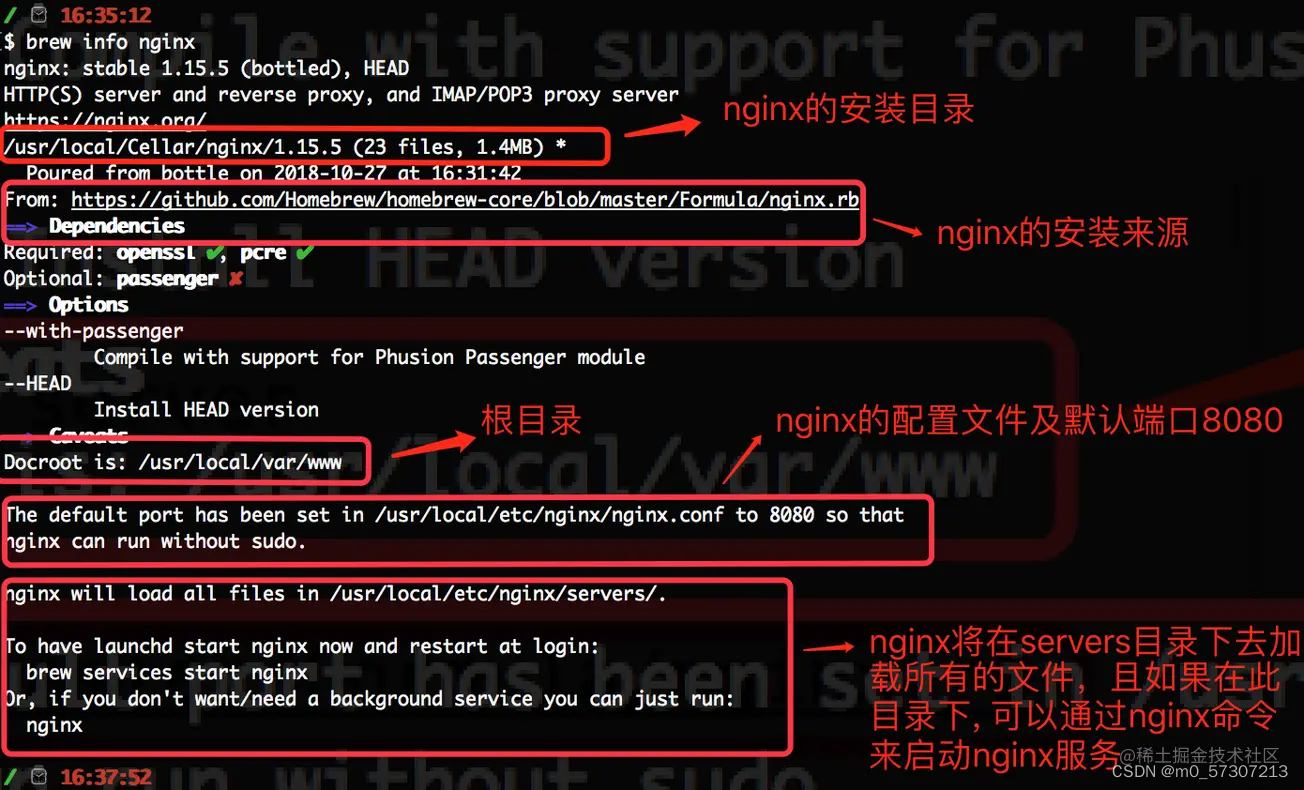
以本人为例:
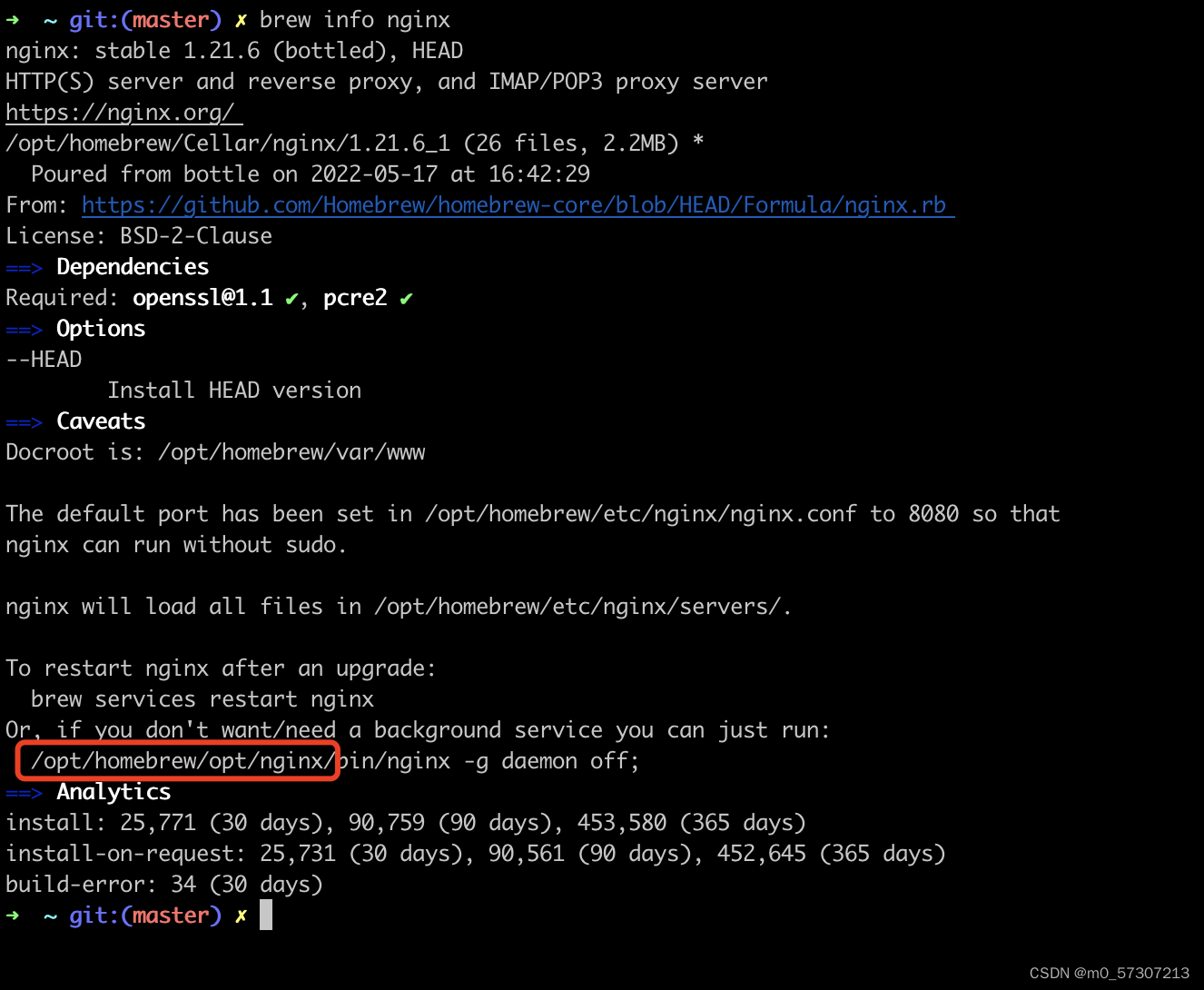

打开文件夹看到html文件,点击进去就是我们放压缩包的地方。
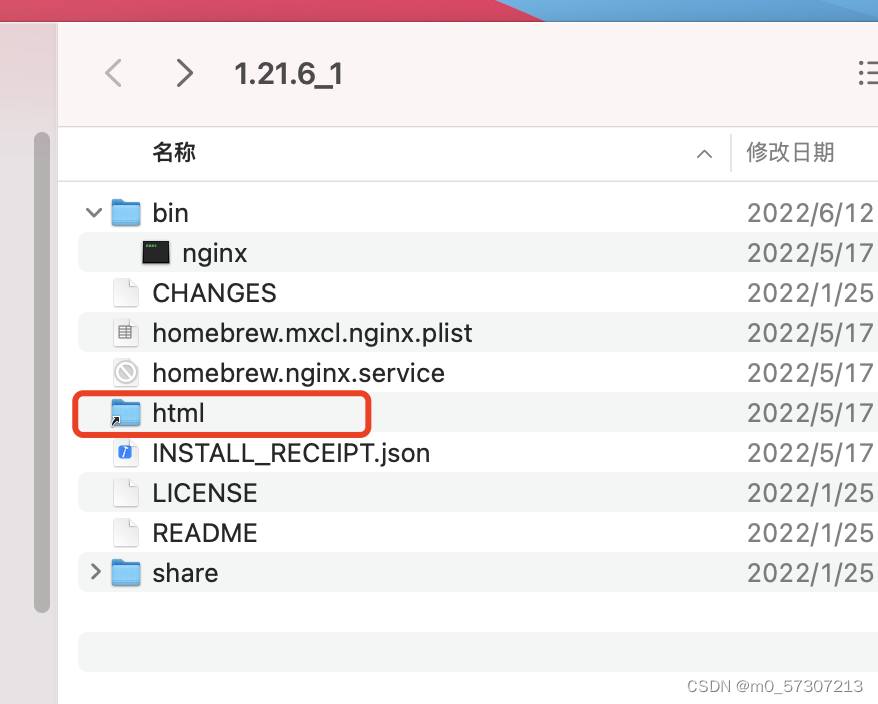
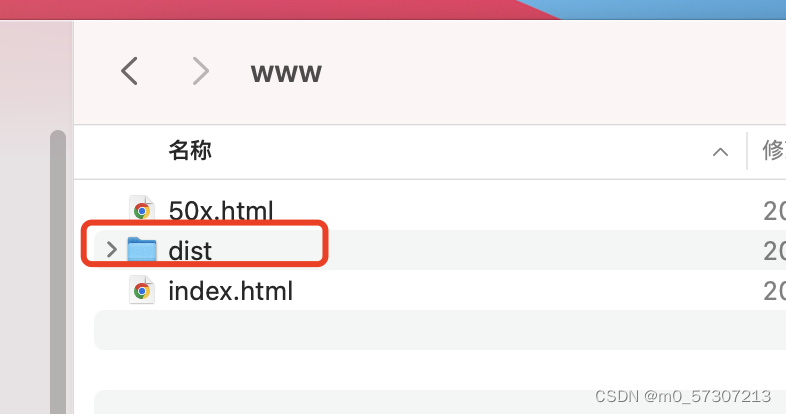
(二)nginx.conf文件配置
nginx.conf文件位置如下:
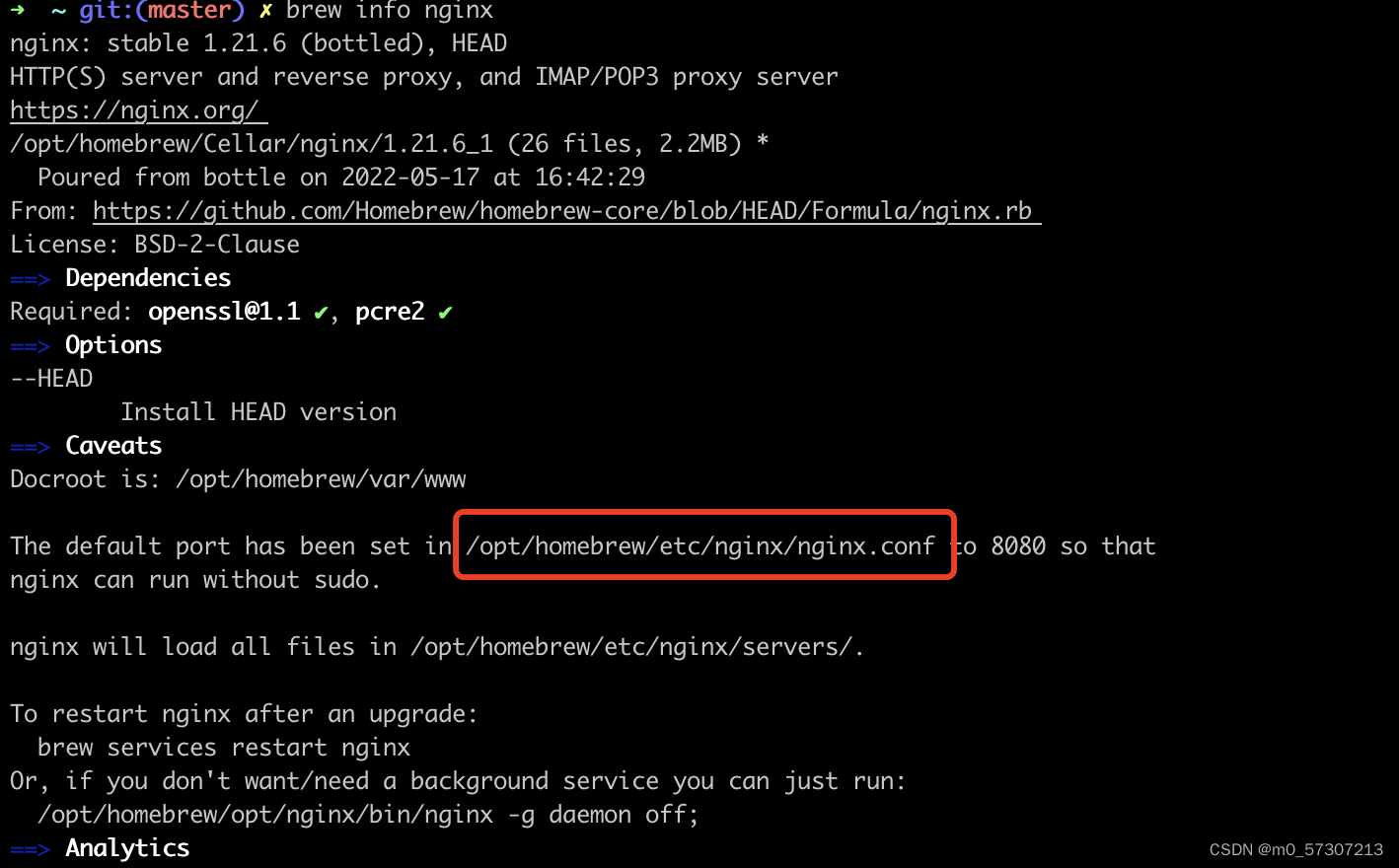
以下以影子设备项目为例,下面列举了http服务器和https服务器的nginx.conf文件内容配置,https服务器运行起来还需要额外的操作,见后面的章节,http服务器和https服务器任选其一配置即可。
http服务器配置:
如下,重点在 underscores_in_headers on;这个配置,和cookie有关。
Access-Control-Allow-Origin的配置是为了在本地接入研测平台。
#user nobody;
worker_processes 1;
#error_log logs/error.log;
#error_log logs/error.log notice;
#error_log logs/error.log info;
#pid logs/nginx.pid;
events {
worker_connections 1024;
}
http {
include mime.types;
default_type application/octet-stream;
underscores_in_headers on;
etag on;
#log_format main '$remote_addr - $remote_user [$time_local] "$request" '
# '$status $body_bytes_sent "$http_referer" '
# '"$http_user_agent" "$http_x_forwarded_for"';
#access_log logs/access.log main;
sendfile on;
#tcp_nopush on;
#keepalive_timeout 0;
keepalive_timeout 65;
gzip on;
gzip_types text/plain text/css application/json application/javascript text/xml application/xml application/xml+rss text/javascript;
server {
listen 9980;
server_name localhost;
#charset koi8-r;
#access_log logs/host.access.log main;
location / {
add_header Access-Control-Allow-Origin *;
add_header Access-Control-Allow-Methods 'GET, POST, OPTIONS';
add_header Access-Control-Allow-Headers 'DNT,X-Mx-ReqToken,Keep-Alive,User-Agent,X-Requested-With,If-Modified-Since,Cache-Control,Content-Type,Authorization';
root html/dist;
index index.html index.htm;
try_files $uri $uri/ /index.html;
#rewrite ^/.*/$ / last; # Redirect everything to / (ex index.html) and let the JS router take care of the rest
# rewrite ^([^.]*[^/])$ $1/ permanent; # Force trailing slash
}
location /api/ {
proxy_pass https://testbook-ng.wgine-daily.com:7799/;
}
location /galaxy-virtual-api/ {
proxy_pass https://cde-open.wgine-daily.com:7799/;
}
#error_page 404 /404.html;
# redirect server error pages to the static page /50x.html
#
error_page 500 502 503 504 /50x.html;
location = /50x.html {
root html;
}
# proxy the PHP scripts to Apache listening on 127.0.0.1:80
#
#location ~ \.php$ {
# proxy_pass http://127.0.0.1;
#}
# pass the PHP scripts to FastCGI server listening on 127.0.0.1:9000
#
#location ~ \.php$ {
# root html;
# fastcgi_pass 127.0.0.1:9000;
# fastcgi_index index.php;
# fastcgi_param SCRIPT_FILENAME /scripts$fastcgi_script_name;
# include fastcgi_params;
#}
# deny access to .htaccess files, if Apache's document root
# concurs with nginx's one
#
#location ~ /\.ht {
# deny all;
#}
}
# another virtual host using mix of IP-, name-, and port-based configuration
#
#server {
# listen 8000;
# listen somename:8080;
# server_name somename alias another.alias;
# location / {
# root html;
# index index.html index.htm;
# }
#}
# HTTPS server
#
#server {
# listen 443 ssl;
# server_name localhost;
# ssl_certificate cert.pem;
# ssl_certificate_key cert.key;
# ssl_session_cache shared:SSL:1m;
# ssl_session_timeout 5m;
# ssl_ciphers HIGH:!aNULL:!MD5;
# ssl_prefer_server_ciphers on;
# location / {
# root html;
# index index.html index.htm;
# }
#}
include servers/*;
}
在bin文件夹下终端输入sudo nginx启动nginx,即可看到前端部署成功。
注意事项:
(1)项目build之前,确认项目的全局变量ENV,REGION都插入到index.html页面中了,
(2)确认webpack的output节点下的publicPath为’/',而不是cdn前缀(因为我们的js,css静态文件并没有上传cdn,引入不到会白屏)
如下,影子设备独立部署nginx服务器成功:
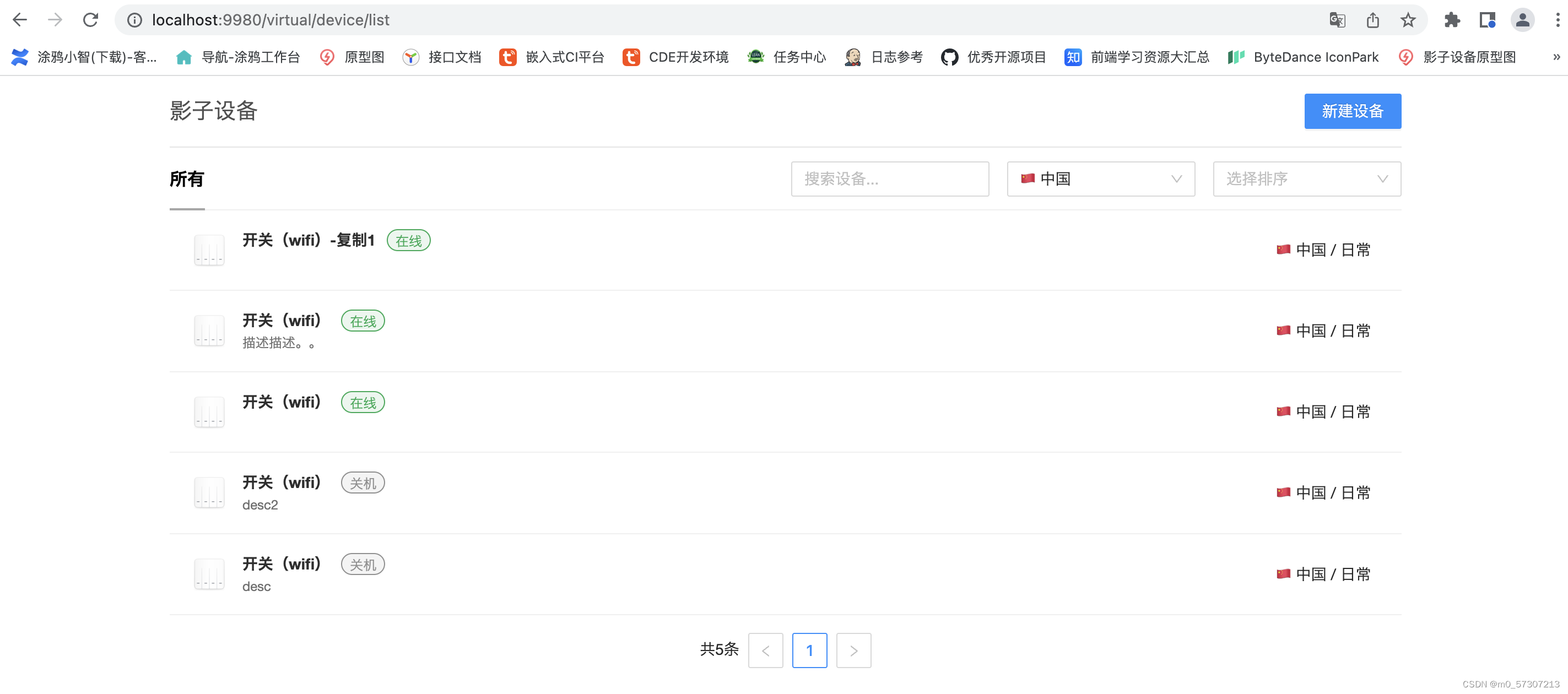
我们把研测接入的影子设备的端口改成9980,yarn run dev启动研测平台,发现影子设备也成功接入了。
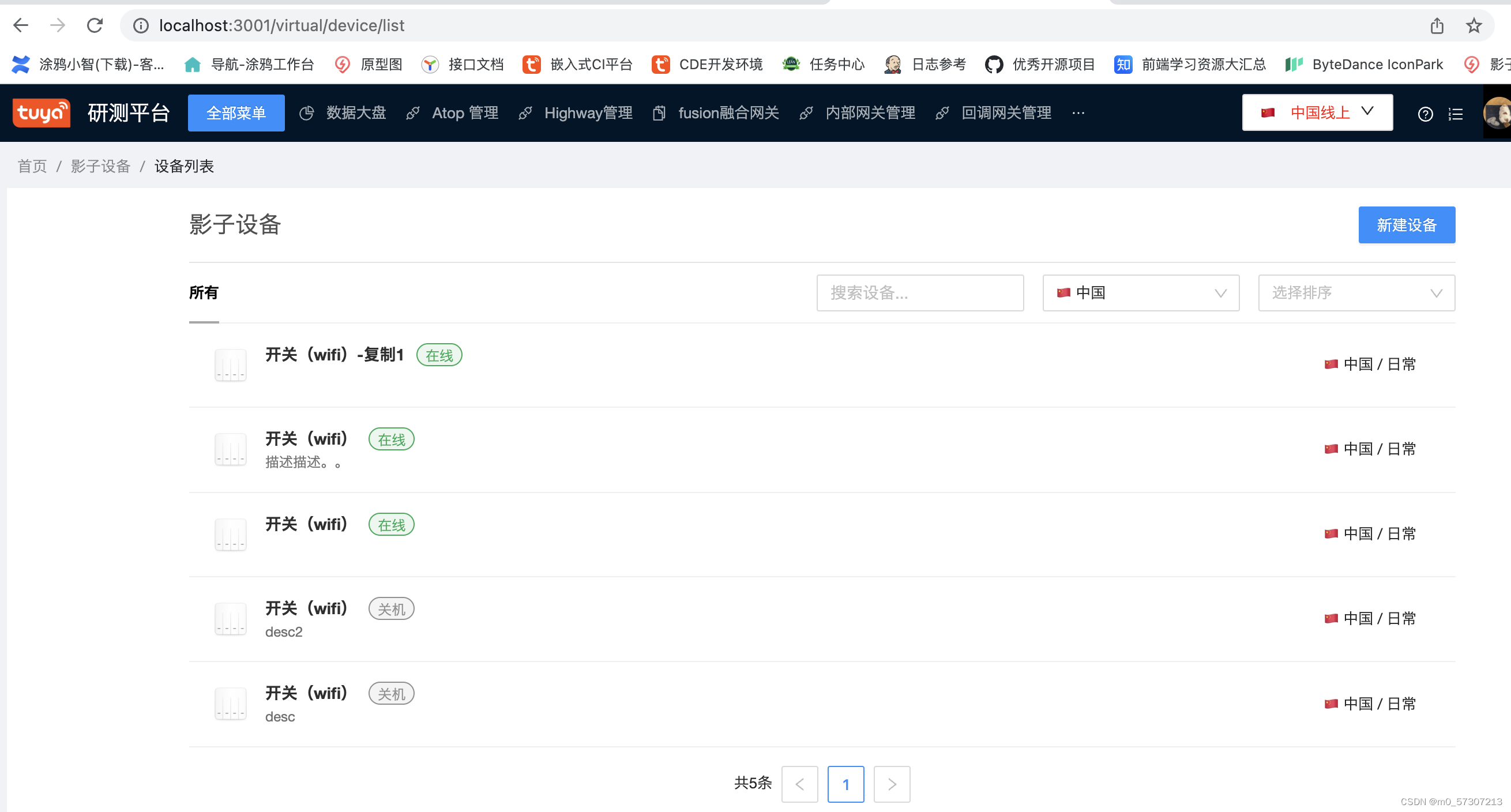
https服务器配置:
#user nobody;
worker_processes 1;
#error_log logs/error.log;
#error_log logs/error.log notice;
#error_log logs/error.log info;
#pid logs/nginx.pid;
events {
worker_connections 1024;
}
http {
include mime.types;
default_type application/octet-stream;
underscores_in_headers on;
etag on;
#log_format main '$remote_addr - $remote_user [$time_local] "$request" '
# '$status $body_bytes_sent "$http_referer" '
# '"$http_user_agent" "$http_x_forwarded_for"';
#access_log logs/access.log main;
sendfile on;
#tcp_nopush on;
#keepalive_timeout 0;
keepalive_timeout 65;
gzip on;
gzip_types text/plain text/css application/json application/javascript text/xml application/xml application/xml+rss text/javascript;
# server {
# listen 9980;
# server_name localhost;
#charset koi8-r;
#access_log logs/host.access.log main;
# location / {
# add_header Access-Control-Allow-Origin *;
# add_header Access-Control-Allow-Methods 'GET, POST, OPTIONS';
# add_header Access-Control-Allow-Headers 'DNT,X-Mx-ReqToken,Keep-Alive,User-Agent,X-Requested-With,If-Modified-Since,Cache-Control,Content-Type,Authorization';
# root html/dist;
# index index.html index.htm;
# try_files $uri $uri/ /index.html;
# #rewrite ^/.*/$ / last; # Redirect everything to / (ex index.html) and let the JS router take care of the rest
# # rewrite ^([^.]*[^/])$ $1/ permanent; # Force trailing slash
# }
# location /api/ {
# proxy_pass https://testbook-ng.wgine-daily.com:7799/;
# }
# location /galaxy-virtual-api/ {
# proxy_pass https://cde-open.wgine-daily.com:7799/;
# }
#error_page 404 /404.html;
# redirect server error pages to the static page /50x.html
#
# error_page 500 502 503 504 /50x.html;
# location = /50x.html {
# root html;
# }
# proxy the PHP scripts to Apache listening on 127.0.0.1:80
#
#location ~ \.php$ {
# proxy_pass http://127.0.0.1;
#}
# pass the PHP scripts to FastCGI server listening on 127.0.0.1:9000
#
#location ~ \.php$ {
# root html;
# fastcgi_pass 127.0.0.1:9000;
# fastcgi_index index.php;
# fastcgi_param SCRIPT_FILENAME /scripts$fastcgi_script_name;
# include fastcgi_params;
#}
# deny access to .htaccess files, if Apache's document root
# concurs with nginx's one
#
#location ~ /\.ht {
# deny all;
#}
# }
# another virtual host using mix of IP-, name-, and port-based configuration
#
#server {
# listen 8000;
# listen somename:8080;
# server_name somename alias another.alias;
# location / {
# root html;
# index index.html index.htm;
# }
#}
# HTTPS server
#
server {
listen 845 ssl http2;
server_name localhost;
ssl_certificate /Users/yuhui/ssl/server.crt;
ssl_certificate_key /Users/yuhui/ssl/server.key;
ssl_session_cache shared:SSL:1m;
ssl_session_timeout 5m;
ssl_ciphers HIGH:!aNULL:!MD5;
ssl_prefer_server_ciphers on;
location / {
add_header Access-Control-Allow-Origin *;
add_header Access-Control-Allow-Methods 'GET, POST, OPTIONS';
add_header Access-Control-Allow-Headers 'DNT,X-Mx-ReqToken,Keep-Alive,User-Agent,X-Requested-With,If-Modified-Since,Cache-Control,Content-Type,Authorization';
root html/dist;
index index.html index.htm;
try_files $uri $uri/ /index.html;
#rewrite ^/.*/$ / last; # Redirect everything to / (ex index.html) and let the JS router take care of the rest
# rewrite ^([^.]*[^/])$ $1/ permanent; # Force trailing slash
}
location /api/ {
proxy_pass https://testbook-ng.wgine-daily.com:7799/;
}
location /galaxy-virtual-api/ {
proxy_pass https://cde-open.wgine-daily.com:7799/;
}
error_page 500 502 503 504 /50x.html;
location = /50x.html {
root html;
}
}
include servers/*;
}
(三)https服务器额外配置
生成自签名的证书
在终端输入以下四句指令即可
第一句作用:目的是生成server.pass.key这样的东西
第二句作用:生成私钥,它是把第一句生成的东西作为输入来生成私钥的。
有了私钥后,我们要生成csr,通过csr才能去请求生成我们的证书

第三句作用:生成csr
它会要求我们输入一些内容,我们输入下面框起来的前面四个内容后,就可以一路回车。

第四句:最后通过csr和私钥来生成我们最后的证书。
最后我们会在终端工作目录下生成.key文件和.crt文件,我们把它粘贴到我们配置的证书和私钥的位置如下:
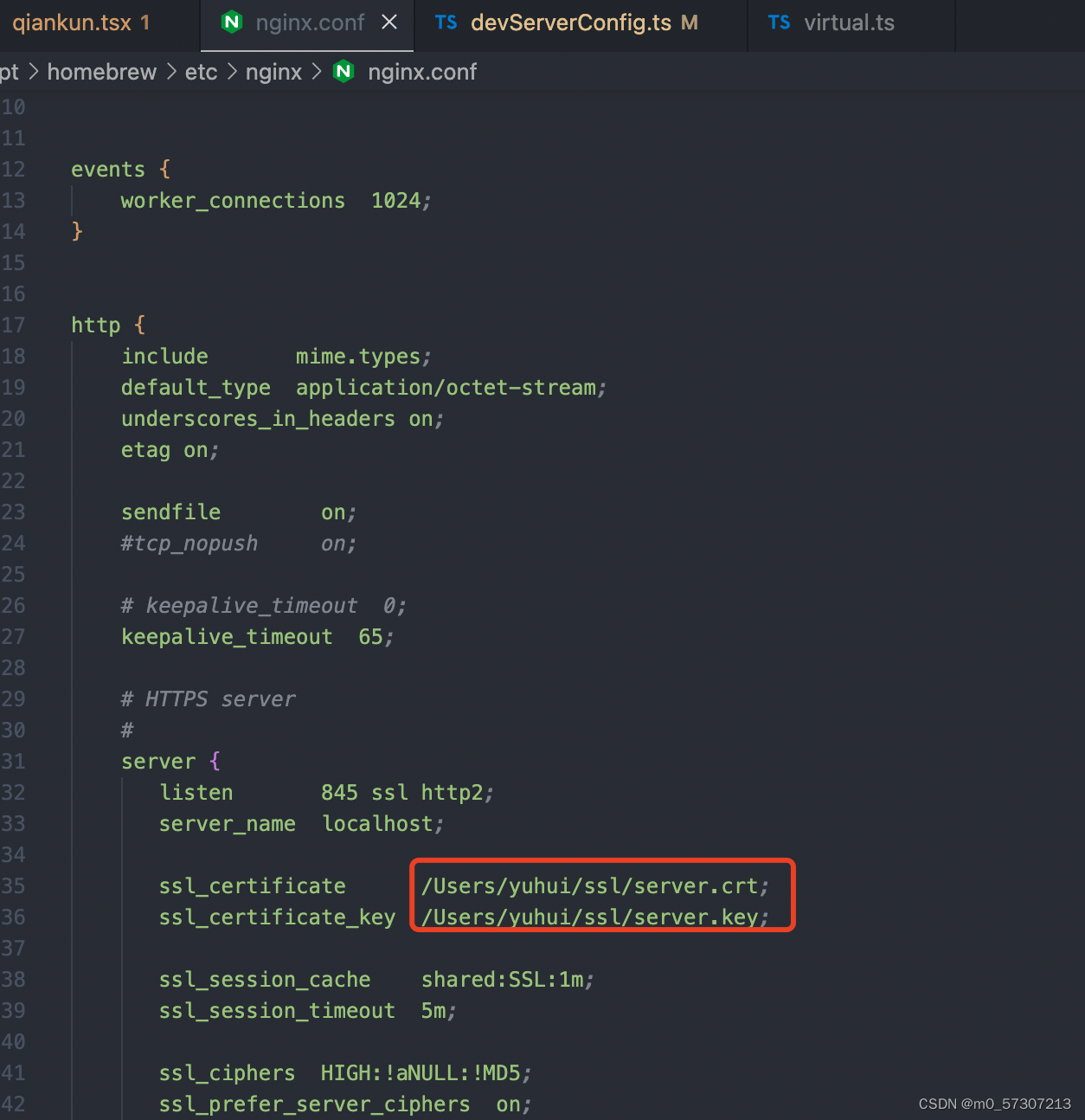
配置好后保存退出,并且重启一下nginx即可。
输入thisisunsafe打开https本地服务器
地址栏输入https://localhost:845

第一次输入会遇到以下这种情况
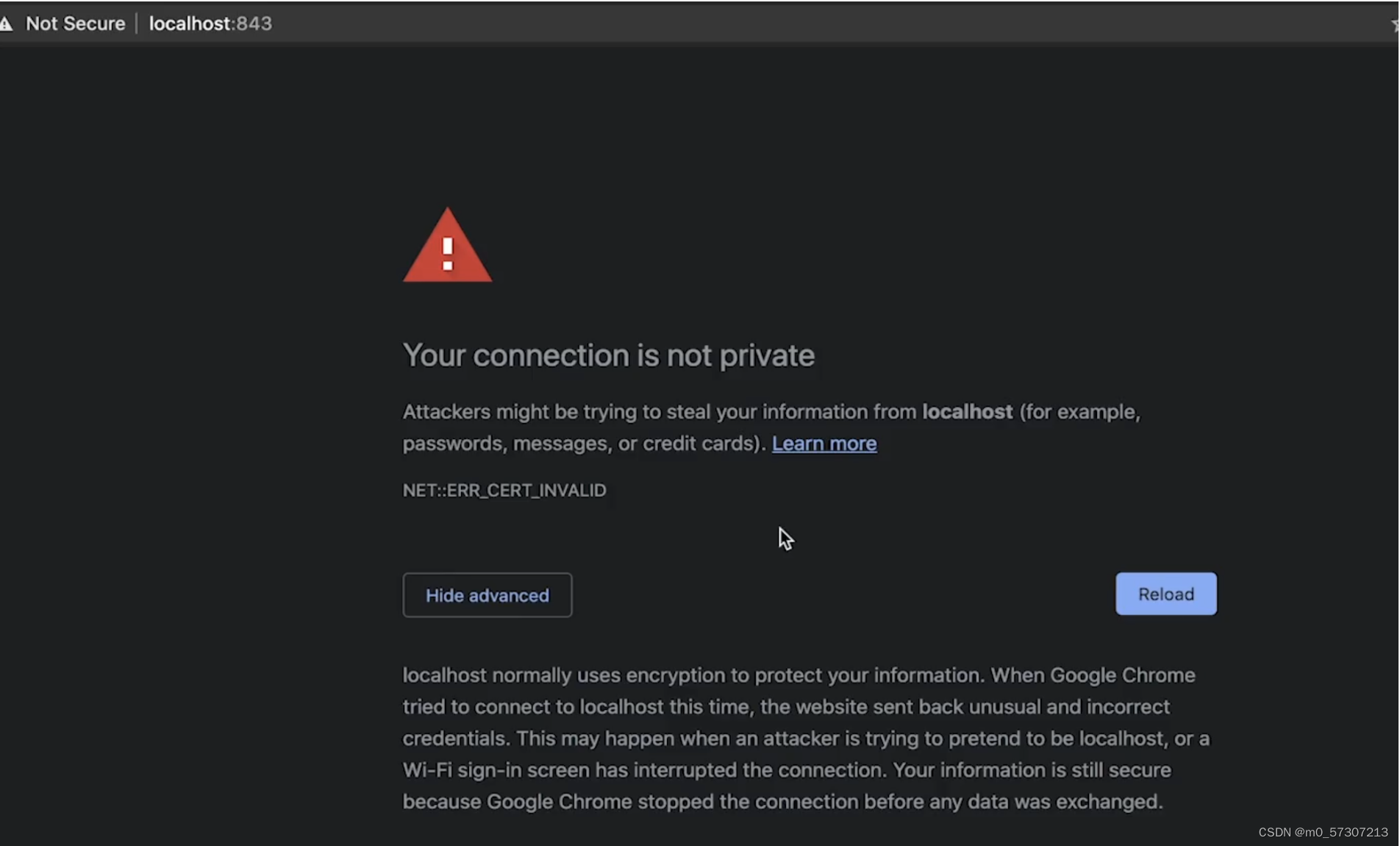
遇到这个情况,我们直接敲击thisisunsafe即可。
然后你就可以在本地以https打开网页了。
关于thisisunsafe 如何输入的文章请参考以下链接:
https://blog.csdn.net/qq_30546099/article/details/114332243
最终显示界面是如下这样的:

(四)nginx常用命令:
在bin文件夹下 sudo nginx即可。
1、启动nginx:sudo nginx
2、关闭nginx:sudo nginx -s stop
3、重启nginx:sudo nginx -s reload
参考文章:
https://juejin.cn/post/6986190222241464350#heading-3